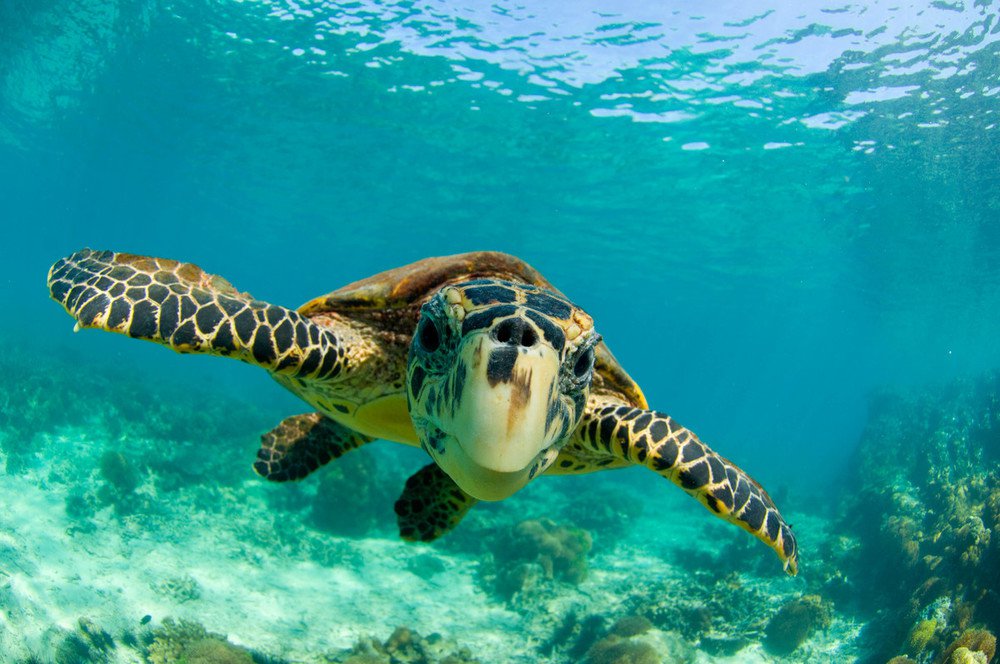Bali, often referred to as the Island of the Gods, is not just renowned for its pristine beaches and vibrant culture, but also its rich marine biodiversity. A highlight of this biodiversity is the turtles. Bali's waters and shores are home to several unique turtle species that draw enthusiasts from all over the world. If you're keen to discover more about turtles in Bali, this guide is for you.
- Green Sea Turtle (Chelonia mydas)

The Green Sea Turtle is perhaps the most commonly spotted turtle species in Bali. Contrary to their name, these turtles aren't actually green but derive their moniker from the colour of their fat deposits.
- Spotting Locations: They can frequently be observed near Nusa Penida, Nusa Dua, and Gili Islands.
- Unique Features: Besides their impressive size, which can reach up to 150kg, they are known for their smooth carapace and beak-like mouth.
- Hawksbill Sea Turtle (Eretmochelys imbricata)

The Hawksbill gets its name from its bird-like beak, and it's a species that plays a vital role in the marine ecosystem, particularly in maintaining the health of coral reefs.
- Spotting Locations: Padang Bai and Menjangan Island are prime spots to see these turtles.
- Unique Features: Recognised by its colourful and ornate shell, the Hawksbill is sadly often hunted for its shell, which is used in trinkets and jewellery.
- Olive Ridley Sea Turtle (Lepidochelys olivacea)

Less common than the Green and Hawksbill turtles in Bali, the Olive Ridley is nonetheless an exciting find for enthusiasts.
- Spotting Locations: Your best bet to see these turtles would be around the remote beaches of Bali's northern coast.
- Unique Features: They are smaller in size and have a more heart-shaped shell. Olive Ridleys are famous for their mass nesting events known as "arribadas".
Conservation Efforts in Bali
The rich turtle heritage of Bali has unfortunately made these species a target for poaching and illegal trade. Thankfully, several conservation initiatives work tirelessly to protect turtles in Bali.
- Turtle Hatcheries: Places like the Bali Sea Turtle Society in Kuta rescue, rehabilitate, and release turtles. They also protect nesting sites and ensure that hatchlings have a safe passage to the sea.
- Eco-tourism: By choosing responsible tour operators who respect marine life, tourists play a role in promoting sustainable practices that benefit these marine creatures.
Responsible Turtle Watching
If you're venturing into the waters to experience turtles in Bali firsthand, remember:
- Avoid Touching: Always admire from a safe distance and never touch the turtles.
- Choose Eco-friendly Sunscreens: Many sunscreens contain chemicals harmful to marine life. Opt for a reef-safe sunscreen.
- Avoid Flash Photography: Flash can disturb and stress turtles. If you must capture the moment, do so without flash.
Wrap-Up: Bali’s Turtle Magic
Turtles have, over the years, become an emblem of Bali’s vibrant marine life. Their graceful presence, both underwater and on the beaches during nesting season, has mesmerised locals and travellers alike. By respecting their habitat and supporting conservation efforts, we can ensure that the magic of turtles in Bali remains for generations to come.
And while you’re soaking in the beauty of Bali and its marine wonders, why not take a piece of that magic with you? Bistro St. Tropez offers an exquisite range of Turtle Boardshorts, capturing the essence of these magnificent creatures. They're the perfect attire for those beach days or just as a stylish reminder of your Balinese adventure.



